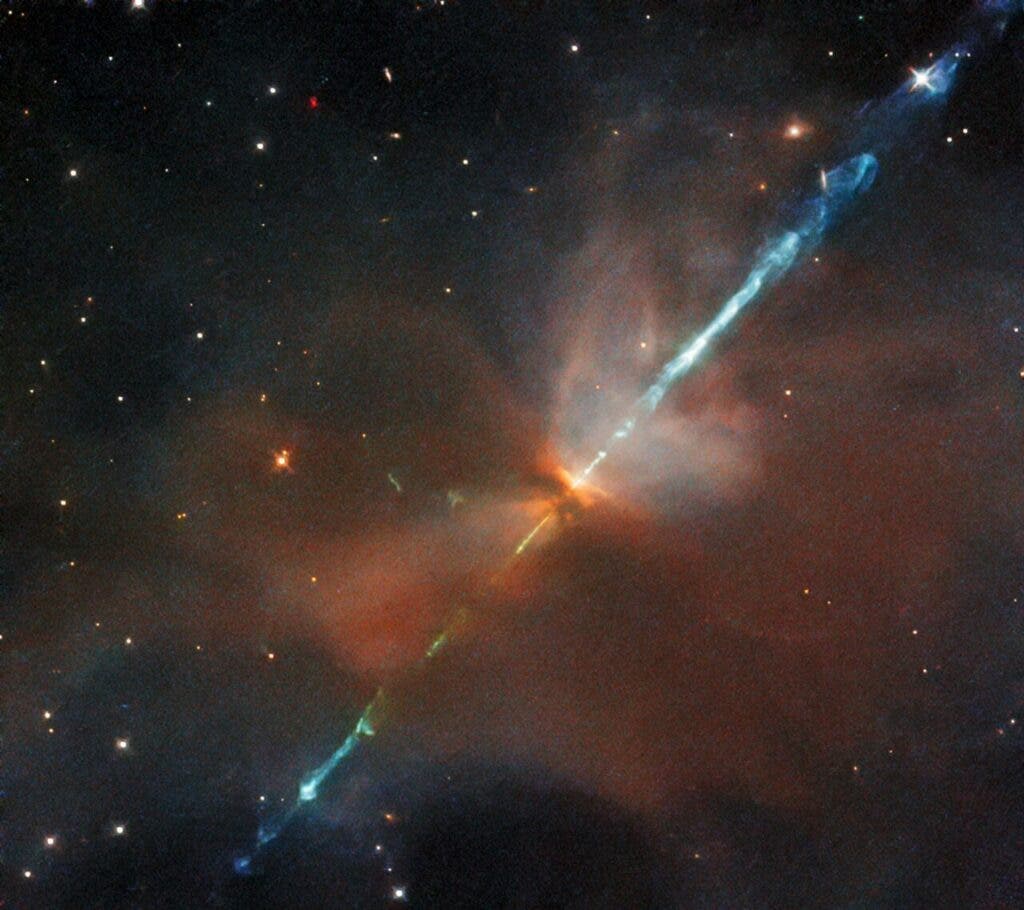Over its 31-year life span, the Hubble Space Telescope has captured plenty of iconic images. However, one of the coolest happened this week when it grabbed a shot of a rare phenomenon called a Herbig-Haro object.
This particular Herbig-Haro object, coined HH 111, lies approximately 1,300 light-years from Earth in the Orion constellation and is deeply encased in a cometary molecular cloud called L1617.
The blue sword-like image is actually two jets of superheated, ionized gas heading into the void from opposite ends of the newborn star IRAS 05491+0247. The Hubble captured the picture using its Wide Field Camera 3 (WFC3) that takes photographs in both optical and infrared wavelengths. The two-camera approach means that it perceives objects at a wavelength range similar to the range of the human eye along with infrared.
While Herbig–Haro objects release light at optical wavelengths which we could see with our own eyes, in theory, they are very difficult to observe in practice because the surrounding dust and gas absorb much of the visible light. Therefore, the WFC3’s ability to observe at infrared wavelengths is important to observing Herbig-Haro objects.
These formations are small patches of nebulosity associated with new stars and are created when gas ejected by the young stars slam themselves into clouds of gas and dust at intense speeds of several hundred miles per second. The phenomena are ample in star-forming regions, and several are often seen around a lone star, aligned along its rotational axis.
The objects are transient phenomena and generally last only (in the grand scheme of space and time) a few thousand years. They can evolve visibly over quite short periods as they shift rapidly away from their parent star into the gas clouds in interstellar space.
These were first discovered in the late 19th century by Sherburne Wesley Burnham while he was looking at T Tauri but were not recognized as being a distinct type of emission nebula until the 1940s.
The first astronomers to study them in detail were George Herbig and Guillermo Haro, hence the Herbig-Haro moniker. The two were working separately on studies of star formations when they first discovered the bodies and found that they were a by-product of the star formation process.
Since its insertion into orbit in 1990, the Hubble has given us more than 1.4 million observations, along with over 18,000 peer-reviewed studies on its findings. It has detected objects as far away as 13.4 billion years off. So, it’s not really surprising that it would give us a flaming blue space sword as well. But it’s awesome nonetheless.



